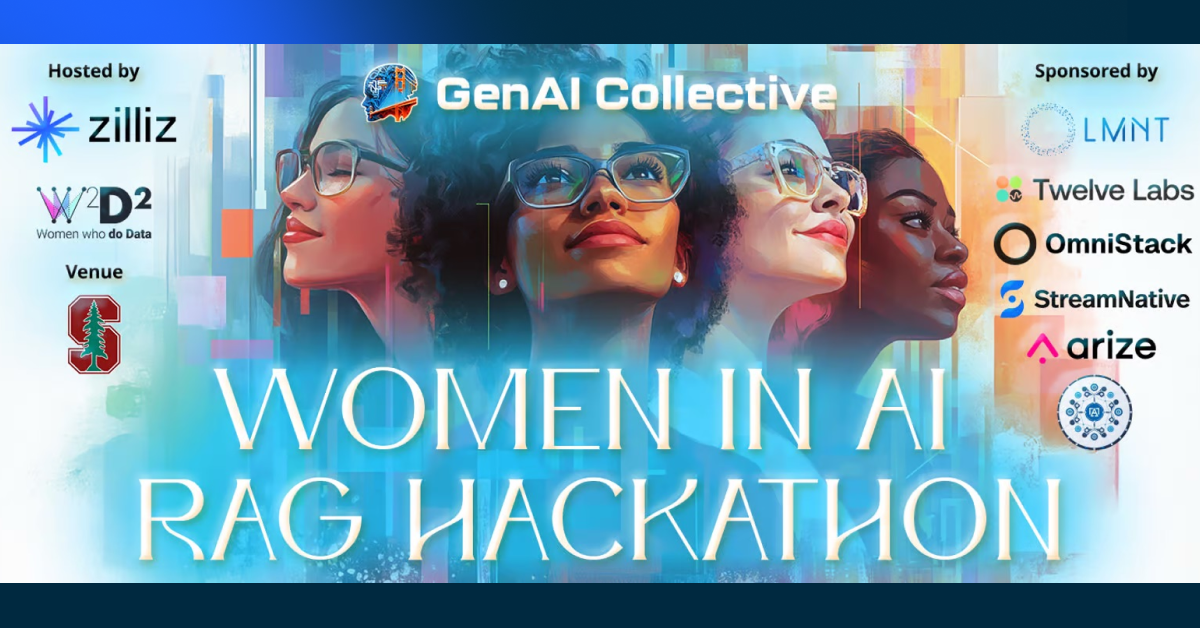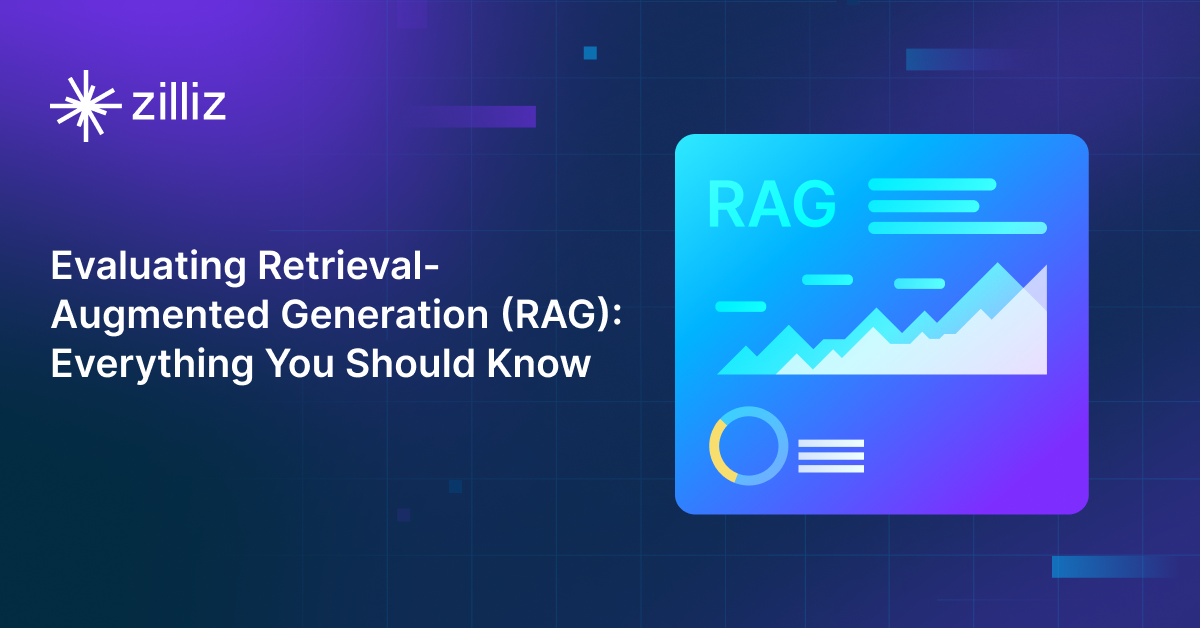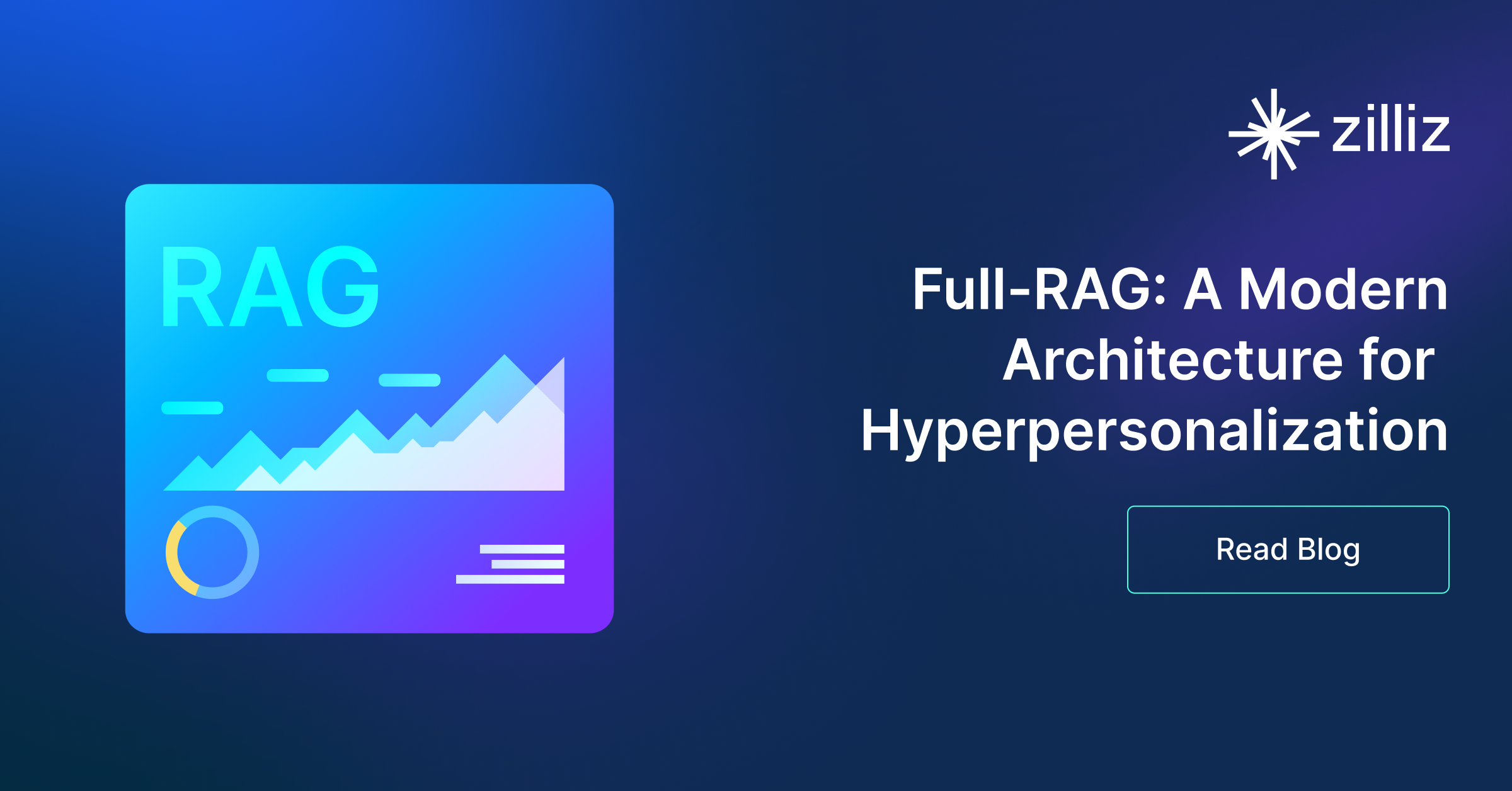Build RAG Chatbot with LangChain, Zilliz Cloud, Databricks Llama 3.1, and Cohere embed-english-light-v3.0
Introduction to RAG
Retrieval-Augmented Generation (RAG) is a game-changer for GenAI applications, especially in conversational AI. It combines the power of pre-trained large language models (LLMs) like OpenAI’s GPT with external knowledge sources stored in vector databases such as Milvus and Zilliz Cloud, allowing for more accurate, contextually relevant, and up-to-date response generation. A RAG pipeline usually consists of four basic components: a vector database, an embedding model, an LLM, and a framework.
Key Components We'll Use for This RAG Chatbot
This tutorial shows you how to build a simple RAG chatbot in Python using the following components:
- LangChain: An open-source framework that helps you orchestrate the interaction between LLMs, vector stores, embedding models, etc, making it easier to integrate a RAG pipeline.
- Zilliz Cloud: a fully managed vector database-as-a-service platform built on top of the open-source Milvus, designed to handle high-performance vector data processing at scale. It enables organizations to efficiently store, search, and analyze large volumes of unstructured data, such as text, images, or audio, by leveraging advanced vector search technology. It offers a free tier supporting up to 1 million vectors.
- Databricks Llama 3.1: This advanced generative model from Databricks focuses on data-centric AI and collaborative analytics. It excels in scalable machine learning tasks, providing robust insights and predictions from large datasets. Ideal for organizations looking to leverage data for automated reporting, interactive data exploration, and enhanced decision-making processes.
- Cohere embed-english-light-v3.0: This model specializes in generating high-quality embeddings for English text, optimized for efficiency and low resource usage. It excels in tasks such as semantic search, clustering, and recommendation systems. Ideal for developers needing fast and scalable text representation capabilities in resource-constrained environments.
By the end of this tutorial, you’ll have a functional chatbot capable of answering questions based on a custom knowledge base.
Note: Since we may use proprietary models in our tutorials, make sure you have the required API key beforehand.
Step 1: Install and Set Up LangChain
%pip install --quiet --upgrade langchain-text-splitters langchain-community langgraph
Step 2: Install and Set Up Databricks Llama 3.1
pip install -qU "databricks-langchain"
import getpass
import os
if not os.environ.get("DATABRICKS_TOKEN"):
os.environ["DATABRICKS_TOKEN"] = getpass.getpass("Enter API key for Databricks: ")
from databricks_langchain import ChatDatabricks
os.environ["DATABRICKS_HOST"] = "https://example.staging.cloud.databricks.com/serving-endpoints"
llm = ChatDatabricks(endpoint="databricks-meta-llama-3-1-70b-instruct")
Step 3: Install and Set Up Cohere embed-english-light-v3.0
pip install -qU langchain-cohere
import getpass
import os
if not os.environ.get("COHERE_API_KEY"):
os.environ["COHERE_API_KEY"] = getpass.getpass("Enter API key for Cohere: ")
from langchain_cohere import CohereEmbeddings
embeddings = CohereEmbeddings(model="embed-english-light-v3.0")
Step 4: Install and Set Up Zilliz Cloud
pip install -qU langchain-milvus
from langchain_milvus import Zilliz
vector_store = Zilliz(
embedding_function=embeddings,
connection_args={
"uri": ZILLIZ_CLOUD_URI,
"token": ZILLIZ_CLOUD_TOKEN,
},
)
Step 5: Build a RAG Chatbot
Now that you’ve set up all components, let’s start to build a simple chatbot. We’ll use the Milvus introduction doc as a private knowledge base. You can replace it with your own dataset to customize your RAG chatbot.
import bs4
from langchain import hub
from langchain_community.document_loaders import WebBaseLoader
from langchain_core.documents import Document
from langchain_text_splitters import RecursiveCharacterTextSplitter
from langgraph.graph import START, StateGraph
from typing_extensions import List, TypedDict
# Load and chunk contents of the blog
loader = WebBaseLoader(
web_paths=("https://milvus.io/docs/overview.md",),
bs_kwargs=dict(
parse_only=bs4.SoupStrainer(
class_=("doc-style doc-post-content")
)
),
)
docs = loader.load()
text_splitter = RecursiveCharacterTextSplitter(chunk_size=1000, chunk_overlap=200)
all_splits = text_splitter.split_documents(docs)
# Index chunks
_ = vector_store.add_documents(documents=all_splits)
# Define prompt for question-answering
prompt = hub.pull("rlm/rag-prompt")
# Define state for application
class State(TypedDict):
question: str
context: List[Document]
answer: str
# Define application steps
def retrieve(state: State):
retrieved_docs = vector_store.similarity_search(state["question"])
return {"context": retrieved_docs}
def generate(state: State):
docs_content = "\n\n".join(doc.page_content for doc in state["context"])
messages = prompt.invoke({"question": state["question"], "context": docs_content})
response = llm.invoke(messages)
return {"answer": response.content}
# Compile application and test
graph_builder = StateGraph(State).add_sequence([retrieve, generate])
graph_builder.add_edge(START, "retrieve")
graph = graph_builder.compile()
Test the Chatbot
Yeah! You've built your own chatbot. Let's ask the chatbot a question.
response = graph.invoke({"question": "What data types does Milvus support?"})
print(response["answer"])
Example Output
Milvus supports various data types including sparse vectors, binary vectors, JSON, and arrays. Additionally, it handles common numerical and character types, making it versatile for different data modeling needs. This allows users to manage unstructured or multi-modal data efficiently.
Optimization Tips
As you build your RAG system, optimization is key to ensuring peak performance and efficiency. While setting up the components is an essential first step, fine-tuning each one will help you create a solution that works even better and scales seamlessly. In this section, we’ll share some practical tips for optimizing all these components, giving you the edge to build smarter, faster, and more responsive RAG applications.
LangChain optimization tips
To optimize LangChain, focus on minimizing redundant operations in your workflow by structuring your chains and agents efficiently. Use caching to avoid repeated computations, speeding up your system, and experiment with modular design to ensure that components like models or databases can be easily swapped out. This will provide both flexibility and efficiency, allowing you to quickly scale your system without unnecessary delays or complications.
Zilliz Cloud optimization tips
Optimizing Zilliz Cloud for a RAG system involves efficient index selection, query tuning, and resource management. Use Hierarchical Navigable Small World (HNSW) indexing for high-speed, approximate nearest neighbor search while balancing recall and efficiency. Fine-tune ef_construction and M parameters based on your dataset size and query workload to optimize search accuracy and latency. Enable dynamic scaling to handle fluctuating workloads efficiently, ensuring smooth performance under varying query loads. Implement data partitioning to improve retrieval speed by grouping related data, reducing unnecessary comparisons. Regularly update and optimize embeddings to keep results relevant, particularly when dealing with evolving datasets. Use hybrid search techniques, such as combining vector and keyword search, to improve response quality. Monitor system metrics in Zilliz Cloud’s dashboard and adjust configurations accordingly to maintain low-latency, high-throughput performance.
Databricks Llama 3.1 optimization tips
Databricks Llama 3.1 is designed for scalable and high-performance RAG applications, making it crucial to optimize retrieval and processing efficiency. Leverage Databricks' distributed computing capabilities to parallelize retrieval and embedding computations, reducing latency for large datasets. Implement hybrid search (combining vector and keyword search) to enhance retrieval relevance. Use optimized prompt templates to minimize token usage while maximizing response quality. Fine-tune temperature (0.1–0.3) for factual consistency and adjust top-k/top-p for response control. Cache frequently queried results to reduce redundant computations, improving both cost and performance. If dealing with large-scale queries, utilize Databricks’ auto-scaling to dynamically allocate resources and avoid bottlenecks. Implement incremental indexing for real-time updates to your vector store, ensuring retrieval accuracy remains high over time.
Cohere embed-english-light-v3.0 optimization tips
Cohere embed-english-light-v3.0 is optimized for lighter, faster embeddings in English language tasks. To maximize efficiency, preprocess input text by stripping out unnecessary words and standardizing formatting, which reduces computational load and speeds up embedding generation. Leverage vector compression techniques to reduce storage costs and improve retrieval performance. When managing large volumes of data, implement efficient search strategies like HNSW or product quantization to reduce time spent querying. Batch embedding operations to process multiple texts at once, minimizing the overhead from frequent API calls. Periodically update the embeddings to capture any changes in the dataset, ensuring freshness and accuracy in search results while optimizing storage.
By implementing these tips across your components, you'll be able to enhance the performance and functionality of your RAG system, ensuring it’s optimized for both speed and accuracy. Keep testing, iterating, and refining your setup to stay ahead in the ever-evolving world of AI development.
RAG Cost Calculator: A Free Tool to Calculate Your Cost in Seconds
Estimating the cost of a Retrieval-Augmented Generation (RAG) pipeline involves analyzing expenses across vector storage, compute resources, and API usage. Key cost drivers include vector database queries, embedding generation, and LLM inference.
RAG Cost Calculator is a free tool that quickly estimates the cost of building a RAG pipeline, including chunking, embedding, vector storage/search, and LLM generation. It also helps you identify cost-saving opportunities and achieve up to 10x cost reduction on vector databases with the serverless option.
 Calculate your RAG cost
Calculate your RAG cost
What Have You Learned?
What an incredible journey we've embarked on together in this tutorial, diving deep into the world of RAG systems! You've learned how to weave together some powerful tools to create something truly remarkable. By integrating LangChain, a flexible framework that unifies all our components, you've set the stage for seamless interaction between each piece. You've seen how the vector database, powered by Zilliz Cloud, enables super-fast searches, allowing your applications to retrieve relevant information in the blink of an eye.
The integration of the Databricks Llama 3.1 has injected life into your system, infusing it with conversational intelligence that elevates user interactions to a whole new level. And let’s not forget about the Cohere embedding model—it’s a gem that generates rich, semantic representations, ensuring that your system truly understands context and nuance in language like never before.
With optimization tips and a handy cost calculator at your fingertips, you’re equipped to refine your RAG system and keep it efficient. So, what are you waiting for? It's time to unleash your creativity and start building, optimizing, and innovating your own applications! The possibilities are endless, and your adventure in the world of RAG systems is just beginning. Dive in, experiment, and see what amazing creations you can come up with! You’ve got this!
Further Resources
🌟 In addition to this RAG tutorial, unleash your full potential with these incredible resources to level up your RAG skills.
- How to Build a Multimodal RAG | Documentation
- How to Enhance the Performance of Your RAG Pipeline
- Graph RAG with Milvus | Documentation
- How to Evaluate RAG Applications - Zilliz Learn
- Generative AI Resource Hub | Zilliz
We'd Love to Hear What You Think!
We’d love to hear your thoughts! 🌟 Leave your questions or comments below or join our vibrant Milvus Discord community to share your experiences, ask questions, or connect with thousands of AI enthusiasts. Your journey matters to us!
If you like this tutorial, show your support by giving our Milvus GitHub repo a star ⭐—it means the world to us and inspires us to keep creating! 💖
- Introduction to RAG
- Key Components We'll Use for This RAG Chatbot
- Step 1: Install and Set Up LangChain
- Step 2: Install and Set Up Databricks Llama 3.1
- Step 3: Install and Set Up Cohere embed-english-light-v3.0
- Step 4: Install and Set Up Zilliz Cloud
- Step 5: Build a RAG Chatbot
- Optimization Tips
- RAG Cost Calculator: A Free Tool to Calculate Your Cost in Seconds
- What Have You Learned?
- Further Resources
- We'd Love to Hear What You Think!
Content
Vector Database at Scale
Zilliz Cloud is a fully-managed vector database built for scale, perfect for your RAG apps.
Try Zilliz Cloud for Free


